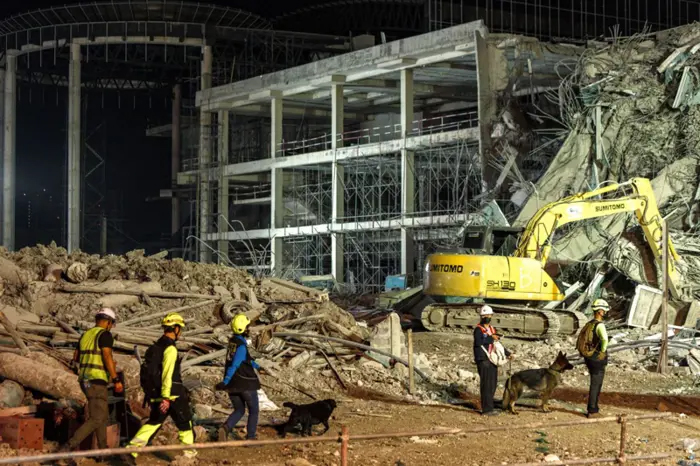WORLD
The death toll from a powerful earthquake in Myanmar reached 1,002, with 2,376 injured and still 30 missing as of Saturday (March 29), according to the Information Team of Myanmar’s State Administration Council.
The devastation has been widespread, with Mandalay, Bago, Magway, northeastern Shan State, Sagaing, and Naypyidaw among the hardest-hit regions.
It is expected that the number of deaths and missing persons will be high in central Mandalay region as a lot of buildings there have been damaged, officials from the Mandalay provincial government told Xinhua, adding that authorities are compiling statistics.
Rescue efforts have intensified despite severe disruptions to transportation and communication networks following the 7.9-magnitude earthquake that struck the country on Friday afternoon.
The quake, which originated near Sagaing, triggered 12 aftershocks ranging from 2.8 to 7.5 in magnitude, further worsening conditions in the affected areas.
Myanmar leader Senior General Min Aung Hlaing has called for humanitarian assistance from both local and international communities.
The earthquake caused a power supply system failure. Mobile networks were also not working smoothly, and there was no mobile signal in some areas of Yangon, according to official reports.
The number of deaths and missing persons may increase in the following days. Search and rescue efforts are still in progress, local rescue organisations in Naypyidaw said.
Many apartments, hospitals, schools and government office buildings have been damaged to varying degrees. Some school buildings collapsed and an unspecified number of students were buried, they added.
A Chinese rescue team landed in Yangon on Saturday morning to support Myanmar’s emergency response and provide aid to affected communities.
As authorities and rescue teams work around the clock to assist those impacted by the disaster, Myanmar faces the daunting task of recovering from one of its most powerful earthquakes in recent history.
With critical infrastructure damaged and essential services disrupted, coordinated relief efforts are urgently needed to help survivors rebuild their lives.
On Saturday morning, Min Aung Hlaing arrived in Mandalay to facilitate the rescue operations.
UN mobilising support
The United Nations on Friday allocated an emergency US$5million from the UN Central Emergency Response Fund to Myanmar for earthquake aid while determining additional needs and coordinating the response, Stephane Dujarric, spokesman for the UN secretary-general, told reporters.
“The UN is gathering information on the number of people impacted, damage to infrastructure and immediate humanitarian needs to guide the response,” he said, adding that the UN is mobilising teams and support.
In a press conference at the UN headquarters in New York, UN Secretary-General Antonio Guterres said the United Nations system “is mobilising to help those in need,” and sent his condolences to the governments and people affected by the quake.
“Our teams in Myanmar are already in contact with local authorities in order to fully mobilise our resources in the region to support the people of Myanmar and other countries impacted,” he added.
The quake will compound an already dire humanitarian situation in Myanmar, where nearly 20 million people need assistance, including more than 3.5 million people displaced from their homes, said Dujarric.
“Beyond Myanmar, the impact appears to be greatest in Thailand,” he said.
“Reports indicate that a high-rise building in Bangkok collapsed, resulting in casualties. A state of emergency has been declared in Bangkok and the government is scaling up its response.”
“The tremors also reportedly caused panic in several cities in Bangladesh, including Dhaka and Chattogram,” Dujarric said.
“While there were no immediate reports of casualties in Bangladesh, authorities remained alert for potential aftershocks.” – Xinhua/ER Monitoring/TS

